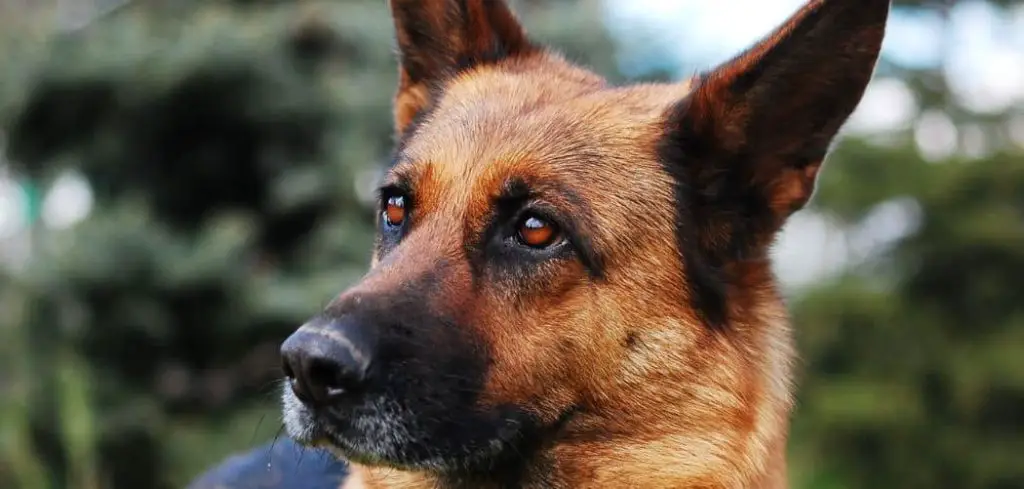It can be alarming when your dog feels warmer than usual and refuses to eat. These symptoms may be signs of an underlying illness or a temporary discomfort, but they should never be ignored.
We outline the common causes of dog feels warm and not eating, what you can do at home, and when to seek veterinary help.
Dog Feels Warm and Not Eating — Why It Happens
When a dog feels warm and isn’t eating, it often points to a fever or systemic issue affecting their comfort and appetite. Infections, inflammatory conditions, heat-related illness, and internal pain can all cause a dog to feel warmer than usual while simultaneously suppressing appetite.
Dogs may also become lethargic or isolate themselves when they are running a fever or battling a serious health issue.

Common Causes of Dog Feels Warm and Not Eating
Fever from Infection
A dog with an infection—whether bacterial, viral, or fungal—may develop a fever. The body raises its temperature to fight off invading pathogens.
This elevation in temperature can cause your dog to feel noticeably warm to the touch, especially on the ears, paws, or belly.
Infections can originate from wounds, urinary tract issues, respiratory infections, or internal organs.
Dogs with a fever often appear tired, may pant excessively, and typically lose interest in food.
Read more: Dog Panting and Not Eating (What it could mean)
Heatstroke
In warm climates or after strenuous activity, dogs can overheat quickly. Heatstroke is a life-threatening emergency that causes a rapid rise in body temperature.
It can result in vomiting, panting, weakness, and a total refusal to eat.
Dogs suffering from heatstroke often feel hot, breathe heavily, and may collapse. This condition requires immediate cooling and veterinary intervention.
Inflammatory Conditions
Conditions such as pancreatitis or inflammatory bowel disease (IBD) can cause internal inflammation that triggers a fever.
Pancreatitis, in particular, causes intense abdominal pain, nausea, and complete loss of appetite.
Dogs with inflammation often feel warmer than usual and may show signs of restlessness, drooling, or lying in odd positions to alleviate discomfort.
Vaccination Reaction
Some dogs develop a mild fever after routine vaccinations. This can make them feel warm and temporarily disinterested in food. Most reactions are short-lived and resolve within 24–48 hours without complications.
However, if symptoms last longer or worsen, it could indicate a more serious immune response.
Tick-Borne Diseases
Diseases like Lyme or Ehrlichiosis—spread by ticks—often cause persistent fevers and appetite loss. These conditions develop over time and may be accompanied by joint pain, swelling, and general fatigue.
Dogs with tick-borne illnesses might feel warm, seem stiff when walking, or become withdrawn and lethargic.
Pain or Discomfort
Pain from dental issues, arthritis, injury, or internal problems can cause a dog to stop eating. In some cases, the pain leads to stress-induced elevated body temperature, making the dog feel warm even without an active infection.
Watch for other pain signs like whining, limping, sensitivity to touch, or avoiding movement.
What to Do If Your Dog Feels Warm and Not Eating
Start by checking for other symptoms. Is your dog also lethargic, vomiting, panting, or showing signs of pain? A warm dog that skips one meal may just be having an off day, but if the symptoms continue beyond 24 hours, it’s a cause for concern.
Try offering a bland diet like boiled chicken and rice to tempt their appetite. Keep your dog cool and ensure they have access to fresh water. Monitor their behavior and take note of any changes in stool, breathing, or energy levels.
Avoid giving human medications or attempting to treat fever on your own. Over-the-counter drugs like acetaminophen or ibuprofen are toxic to dogs.
If your dog is very young, old, or has a chronic condition, don’t delay—seek veterinary care sooner rather than later.
When to Call or Visit Your Vet
Call your vet immediately if:
Your dog refuses food for more than 24 hours.
Your dog’s body feels hot and they are lethargic or unresponsive.
There are signs of vomiting, diarrhea, or dehydration.
Your dog is panting heavily or breathing abnormally.
You suspect heatstroke or tick exposure.
A vet may take your dog’s temperature (normal range is 101–102.5°F) and run bloodwork or imaging to identify infections, inflammation, or organ issues.
Read more: Dog Shivering and Not Eating (Should you be worried?)
Key Takeaway
If your dog feels warm and isn’t eating, it’s usually a sign that something’s wrong internally. From fever to inflammation or environmental stress, these symptoms should never be ignored.
Keep your dog cool, comfortable, and hydrated while you monitor symptoms closely. If they remain uninterested in food or seem unwell, a visit to the vet is the safest next step.
Your quick action could help prevent complications and get your dog feeling like themselves again.
